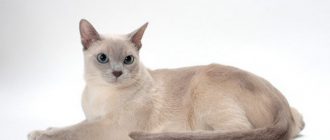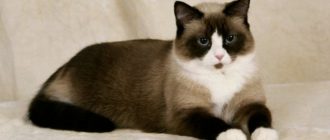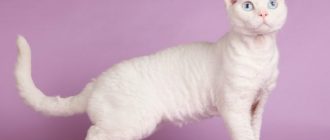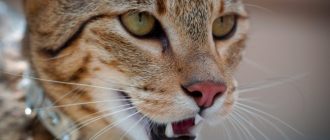
Classification
Origin: Russia
Class: FiFe classification: Category III – shorthair & Somali; WCF classification: Category 3 – Shorthair
Usage: highly developed domestic cat hunting instinct
Color: pure, uniformly blue with a distinct silver tint
Sizes: height at the withers: up to 25 cm; weight: 3–7 kg
Life span: 16–20 years
Elegant and slender Russian blue cat recalls the ballerina.
She is graceful and light, distinguished by aristocratic manners and special flexibility.
This is the most popular shorthair breed. cats in the world.
Over the years of living in city apartments, she did not lose her hunting instincts.
The inveterate huntress is curious and independent. But does not like loneliness.
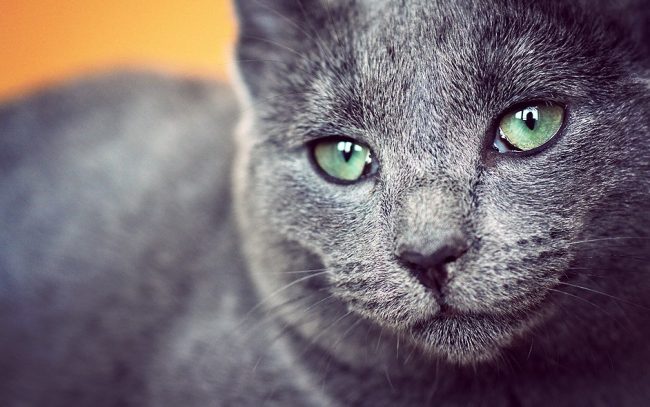
Russian blue cat gets used to one house and does not tolerate moving from place to place
Content
- 1 Breed History
- 2 Character and Psychology
- 3 Application
- 4 How to choose a kitten
- 5 Care features
- 5.1 Combing
- 5.2 Power
- 6 Health
- 6.1 characteristic diseases
- 6.2 Vaccinations
- 7 Knitting
Breed history
Contents
The origin of Russian blue is shrouded in myths and contradictions.
There are many legends about how English sailors These cats were transported from Arkhangelsk to various ports of the world.
The story of how a cat got to the northern port is based on two versions.
Sailors noticed a beautiful cat in the vicinity of Arkhangelsk took her on board. So the breed began its journey around the world.
According to the second version, cats just escaped from the board of English ship and took root in the northern port city.

Peaceful, kind and obedient Russian blue cat character has slightly stubborn. She obeys only one master and prefers freedom
Reliable information confirming any version, not.
The British breeders were engaged in the further formation of the breed. Tribal breeding began in 1893.
Probably from a couple brought from Arkhangelsk. But only in 1935 the year was able to officially register the first standard. So a breed of Russian blue cats appeared.
The British managed to save the breed during the First World War. The Russian blue period was on the verge of extinction.
She had to cross with Siamese cats. Consequences of these actions are manifest today.
Continued work to restore the breed in the 50-60s of XX Art. the Americans.
But only in the 70s was it possible to restore the original type breeds, and the 80s were marked by the return of the breed to Russia.
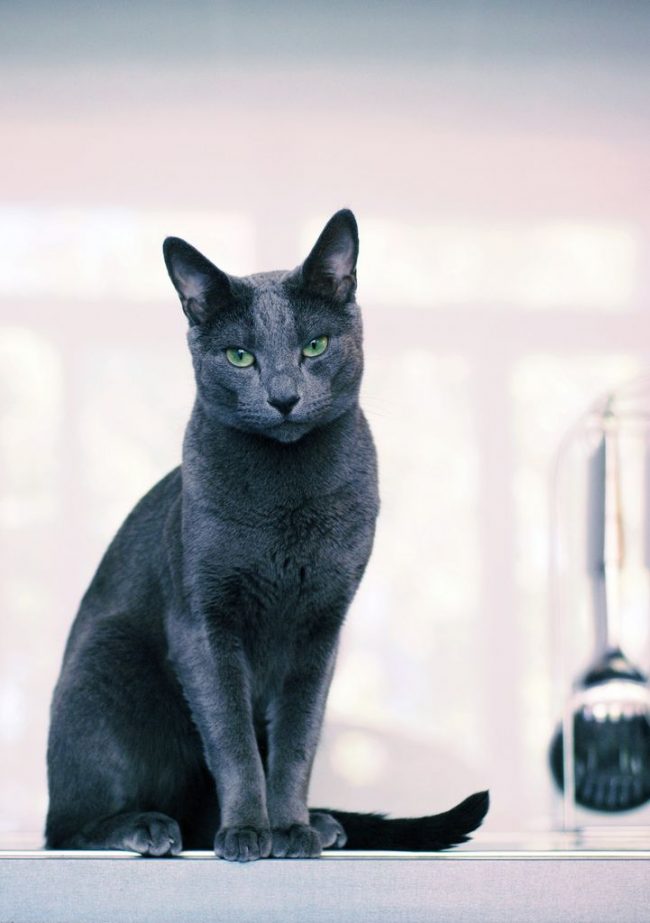
Cats of this breed are considered intellectuals. They learn fast understand human words and gestures
Character and Psychology
Peaceful, kind and obedient Russian blue cat character has slightly stubborn.
She obeys only one master and prefers freedom. At this is alien to her vagrancy.
If you’re curious about how cats find their way home, we advise you to read articlehttps: //kot-pes.com/kak-koshki-nahodyat-dorogu-domoy/
Russian blue liking homebody. Russian blue cat, so same as pixie bobbies Ragdoll, does not like moving from place to place.
- Since the breed has a strong hunting instinct, it is better than itself feels in a country house than in an apartment.
- This spectacular feline is modest and secretive, trusts only the owners. With strangers behaves Caution.
- The breed is distinguished by devotion and openness of character.
- She is never intrusive or annoying, but does not tolerate violence. above oneself.
- The breed gets along well with other pets, whether even ferret, squirrel degu or lemming.
- Cats of this breed are considered intellectuals. They learn fast understand the words and gestures of a person.
- They have a quiet voice and almost no cat smell.
- During games, these cats do not release claws.
It is safe to say that one of the most problem-free keeping cats – Russian blue cat.
You can find out about other unpretentious cat breeds. here: https: //kot-pes.com/samye-neprihotlivye-koshki-dlya-kvartiry/
Description of the breed was finally formed in 1965.
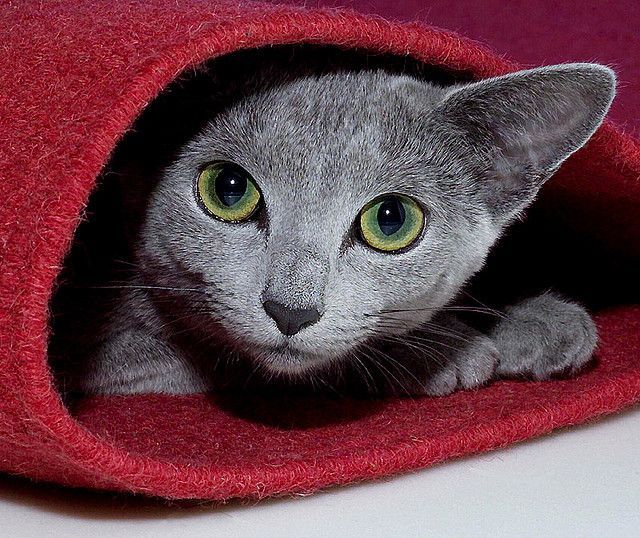
Russian blue cat is never annoying or annoying, and not suffers violence over himself
Plush Russian blue attracts the eye.
The main features of the breed are green cat eyes and thick “double” wool.
Due to equal length of undercoat and integument, wool seems thick and silky.
According to the standard, thoroughbred cats have a short soft textured wool lagging behind the body.
There are two types of Russian blue: – American type; – European type of.
Americans are smaller than their counterparts from Europe.
Their ears, unlike the Europeans, are divorced to the sides like Oriental breed.
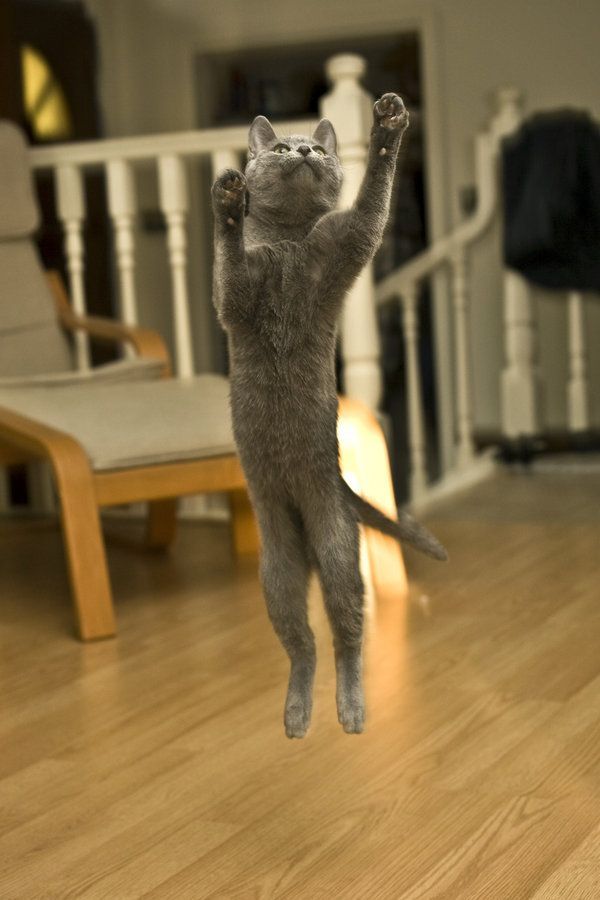
Russian blue takes care of his figure, so regularly doing exercises
Application
The ancestors of Russian blue hunted in the harsh northern climate.
And though today these feline representatives do not have to think about food, they retained their hunting instinct.
These cats hunt wherever they can. Even in the city Russian blue finds a hunting object: catches flies, mosquitoes and butterflies.
She can watch the mice for hours.
Jumping and curious Russian blue loves to play. For games she uses everything it finds. It can be toys or different things.
If you want to please your pet and make your toy hands, we recommend reading articlehttps: //kot-pes.com/igrushki-dlya-koshek-svoimi-rukami/
But the main purpose of this breed today is to shine on exhibitions.

During the games, the Russian blue cat does not release its claws, so You can not be afraid that she will hurt the child
How to choose a kitten
You need to choose bred babies. The main rule here is what older is better.
Finally, pedigree signs in kittens are formed by the year, but already in three months you can understand who will grow out of the baby.
Kittens should have a pale green eye color. Soon they should become emerald. White spots are unacceptable.
The weight of a 3-month-old kitten is about 2 kg. kitten with a tail curl. Ideally, the tail should be flexible.
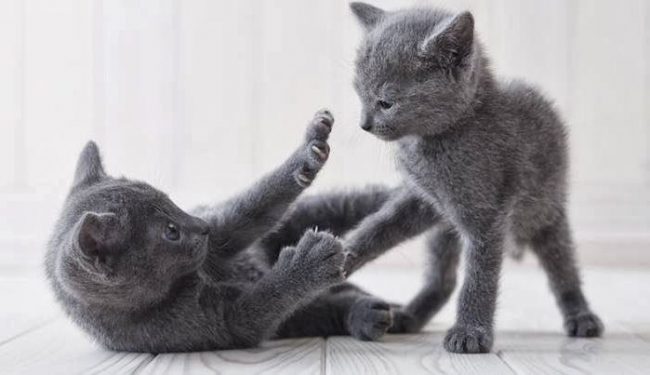
Jumping and curious Russian blue loves to play everywhere and with by all
When choosing a kitten, get acquainted with the baby’s parents. How do they look they, so will your Russian blue cat.
Kittens of this breed well inherit their parents characteristics.
There are disadvantages that can be ignored.
The light streak on the tail of the kittens will disappear over time. A protruding long awn will soon come out by itself.
These rare long needles can even be plucked. Easy to remove and tassels on the ears.
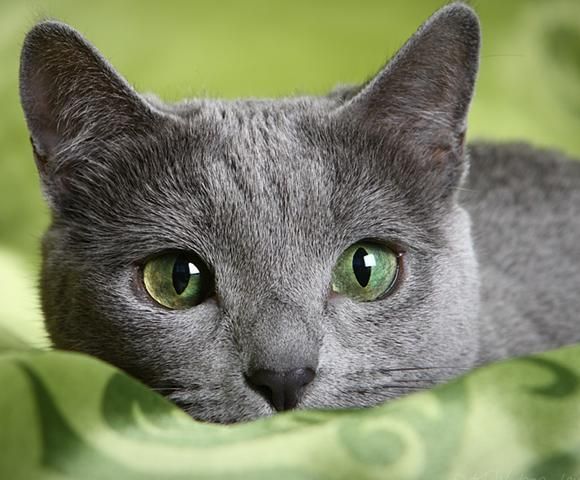
The Russian blue has a highly developed hunting instinct. She catches flies, mosquitoes and butterflies, can watch mice for hours
Care Features
Russian blue is a fairly clean breed. But she is very sensitive to clean tray.
The cat will not become in an insufficiently clean tray to walk. She will do her job elsewhere.
Of the positive qualities, there is a lack of need mark the territory of this breed.
Combing
Russian blue belongs to the shorthair, requiring minimum care.
Once a week you need to comb the hair and undercoat by the facilitator.
They do this in the following sequence: neck and chest, sides, then belly and paws. It is better not to touch the tail.
The hairs in this place are very sensitive: they are easily pulled out and long recover.
You can polish the coat to shine with a piece of suede or fur. In Shedding time the cat will have to be combed more often.

Russian blue cat is a pretty neat breed, she is very sensitive to clean tray. In an insufficiently clean tray the cat does not will walk. She will do her job elsewhere
But often bathing cats is not recommended. At local dirt it is better to use dry shampoo.
If you can not do without washing, then it is better to do it in the bathroom. To the bottom baths need to lay a cloth.
She will give support to the paws of the animal and they will not disperse.
Food
The frequency of feeding cats depends on age:
- 3-4 month old kittens – 5 times a day;
- 4-6 months – 4 times;
- 6-12 months – 3 times;
- at 1–1.5 years, the cat is considered an adult and is transferred to two meals a day.
The most convenient industrial feeds in use. They are dry and wet.
High-quality feed takes into account the animal’s nutritional needs substances, vitamins and minerals.
Drawing up a diet for this breed exclusively from natural feed is associated with some difficulties.
Difficulties arise with the calculation of the necessary substances in feed this type.
Mixed type of feeding shows good results.
But do not forget that food from the table for cats is not fits.
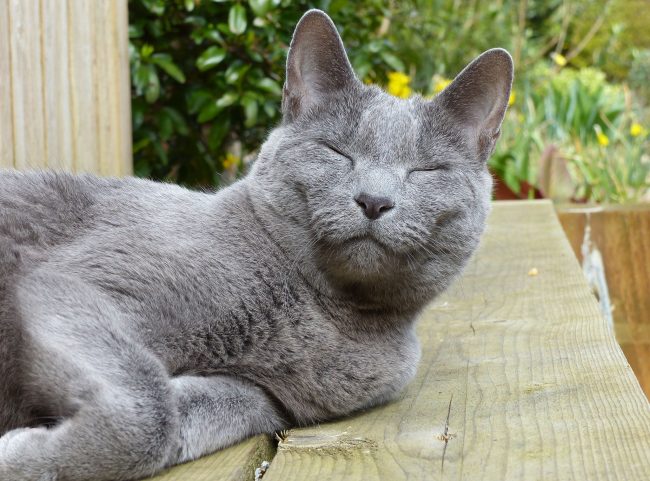
A big plus of Russian blue – no need to tag the territory
Health
Characteristic diseases
Russian blue, as well as Norwegian forest cats and egyptian mau not brought artificially. They belong to natural breeds.
Therefore, they have strong immunity and good health. They live long and very rarely get sick.
Russian blues are not afraid of drafts and cold temperatures. They have no genetic pedigree diseases.
Although they, like other representatives of the cat, can get sick on cat diseases
Vaccinations
The first eight weeks of kittens protect maternal immunity. Then kittens are vaccinated.
Only healthy animals can be vaccinated.
Suitable age is 2.5-3.5 months. Used for this combined vaccines for rhinotracheitis, panleukopenia, calcivirus.
Vaccination pass in several stages. Interval – 3-4 weeks.
Before vaccination, kittens are given preparations for worms.
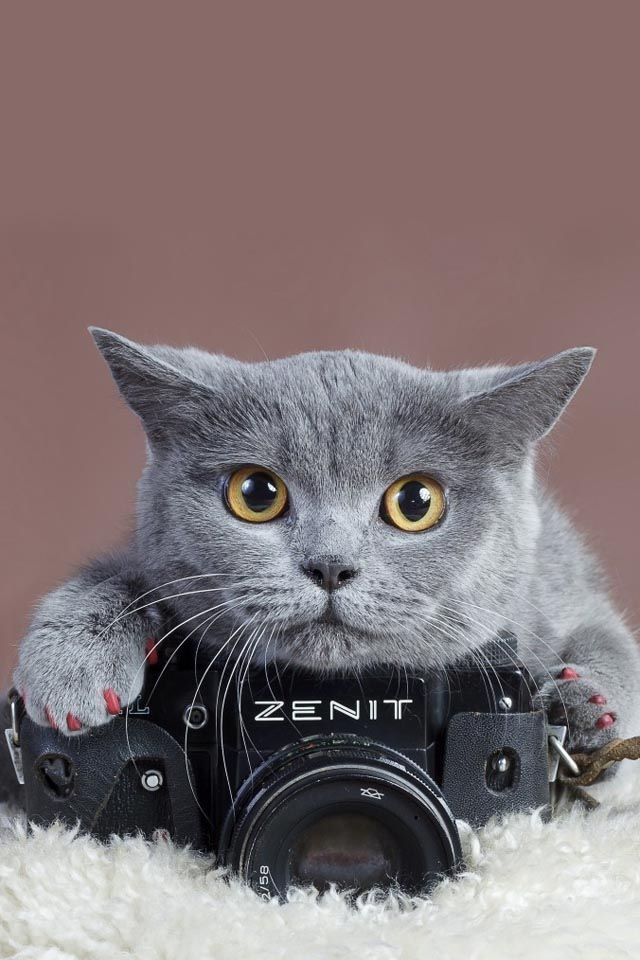
Russian blue is one of the most problem-free content cats
After a month from the date of the last comprehensive vaccination, kittens are vaccinated, like dogs, from shearing depriving.
A rabies vaccine is given at the age of 3-4 months. Need her repeat annually.
Knitting
Knit a Russian blue cat with representatives of any other breed is strictly prohibited!
For violation can be expelled from the club and prohibit tribal breeding.
The population of this breed is constantly growing, so find a partner for knitting in your region is not difficult.
The mating of this breed is calm and almost silent. TO healthy animals conforming to the standard are allowed for breeding breed.
Russian blue females are first knitted in 1.5–2 years.
Anna Lyakhovich7 Overall result CharacteristicAggression4Adaptability8Activity10Weight6 Training6Friendliness8Playability8Intelligence6Noise4 Add your review | Read reviews and comments

